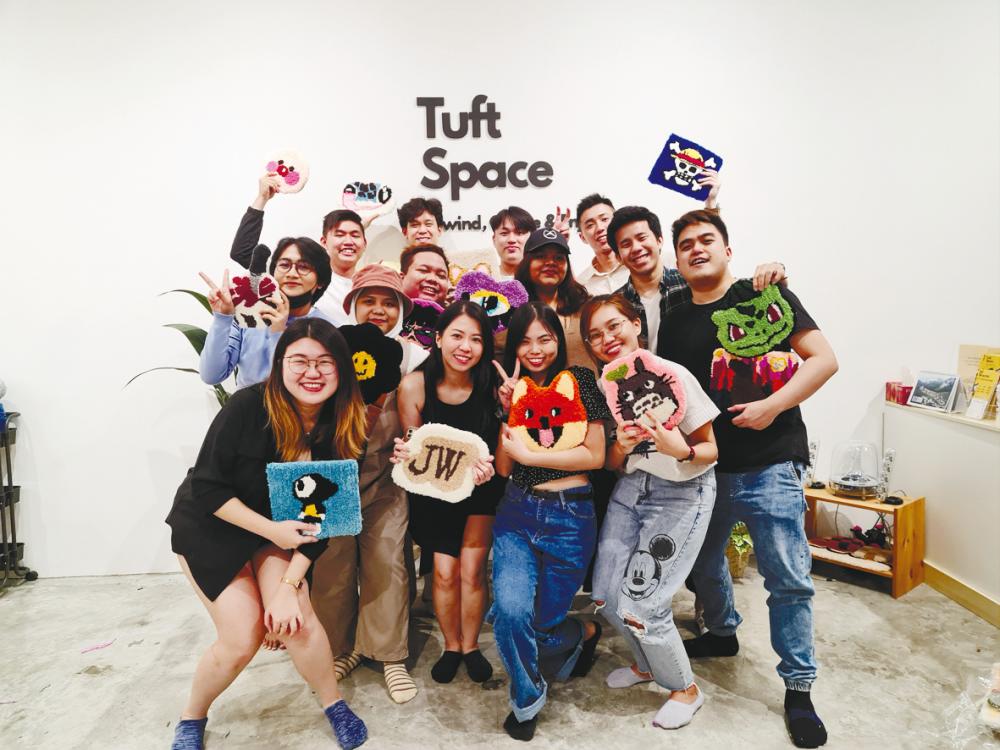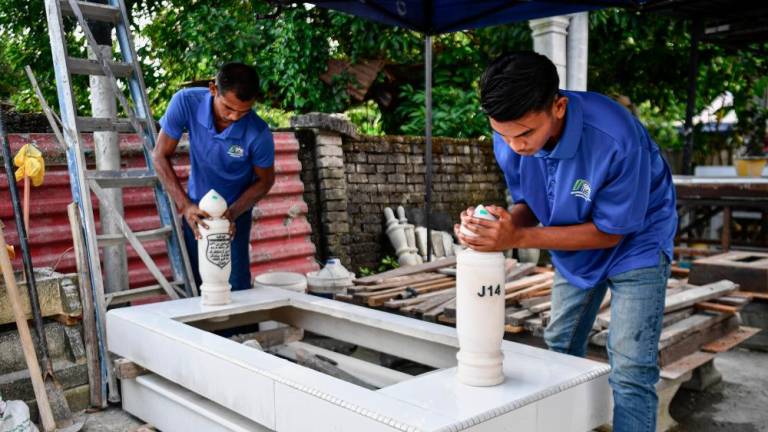HUMANS have handmade rugs out of every possible material for millennia. Ancient tribes wove together reeds and grasses to make primitive rugs and keep the cold ground warm, and now, hand-woven carpets are beloved for their artistic value. During the lockdown, many picked up creative hobbies to fill their days, and tufting was one of them.
Tufting requires either a manual or electric gun, which is a handheld machine where yarn is fed through a needle and subsequently punched in rapid succession through a backing fabric. Automatic tufting guns have a sharp end which cuts the yarn after each poke which creates the evenly-length grass-like pile carpet look.
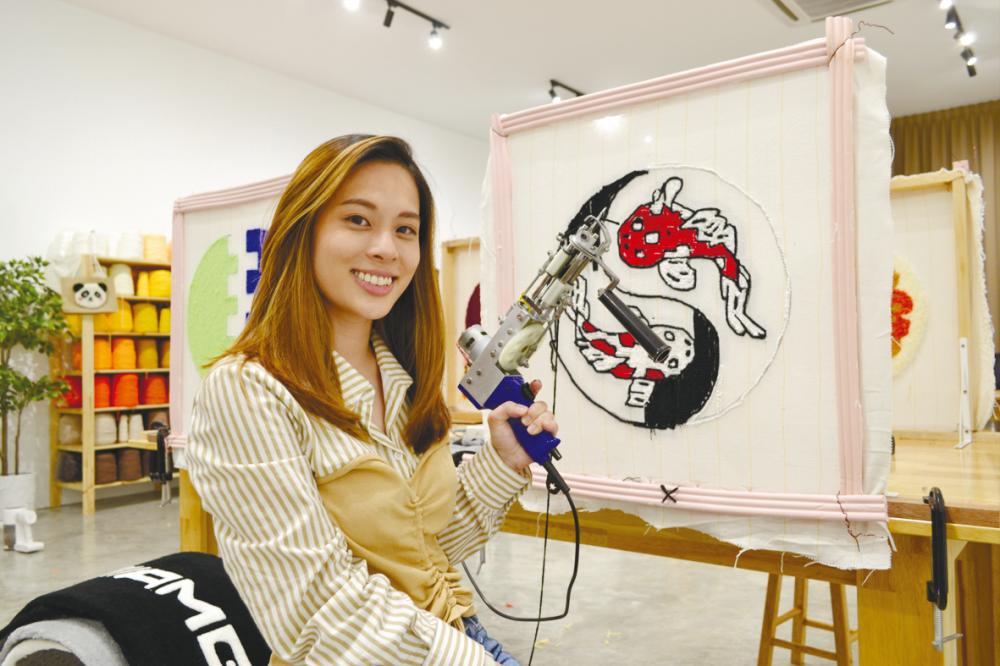
The BUZZ team was invited to Tuft Space, helmed by Jean, 29 and her partner, Jeremy Lim, 29, who started their craft store in May this year.
Located in Eco Ardence, Tuft Space is a place where customers can attend a tufting workshop to create their own decorative rug in the design of their choice.
As we entered the place, we were greeted by a wide shelf displaying yarns of all colours, from neutrals to brights, and workshop tables with monk’s cloth stretched out on wooden frames clamped vertically on the table. Since it was our first time tufting and we were from theSun, Jean had the bright idea of giving us a beginner-friendly sun to tuft, which was pre-traced on the cloth.
The first lesson was learning how to handle the tufting gun and looping the yarns in the gun. On a piece of practice cloth, Jean showed us how to tuft straight lines and curves to practice on before we did it on our cloth.
It took us a couple of tries, and then we were sent to pick out our yarn colours. We were given creative freedom, though Jean did help out with our colour palettes when we asked for her professional opinion.
When tufting, the whole process takes place from the back of the cloth, so tufters need to note that the design will come out in its mirrored form.
Besides that, we also had to make sure that we held the tufting gun tight against the cloth as the pressure was key to getting a consistent and smooth result. Otherwise, the yarn wouldn’t hold against the cloth and would fall off, or you’d accidentally cut the cloth, giving you a bald rug.
The monk’s cloth was a very forgiving foundation fabric and whenever we made mistakes, we could just pull the loops out from the fabric.
The whole process of tufting a rug would generally take 4-6 hours, and when we were doing the tufting, it was really therapeutic seeing the yarn get fed into the cloth. It was sort of like colouring a picture, except with yarn. Though after a while, sitting and holding the tufting gun did tire us a bit as the gun weighed about 2kg, but it wasn’t too bad.
One of the technical issues we faced was the yarn popping out of the loop on the tufting gun. Usually, it was because our yarn rolls were too small and fell each time they got pulled, but Jean was always there to make sure we were tufting right, and diagnosing our problems.
For example, she helped us change to a new bigger yarn roll, or make sure that the space between the yarn lines was tight enough, and soon, we were done colouring in our suns.
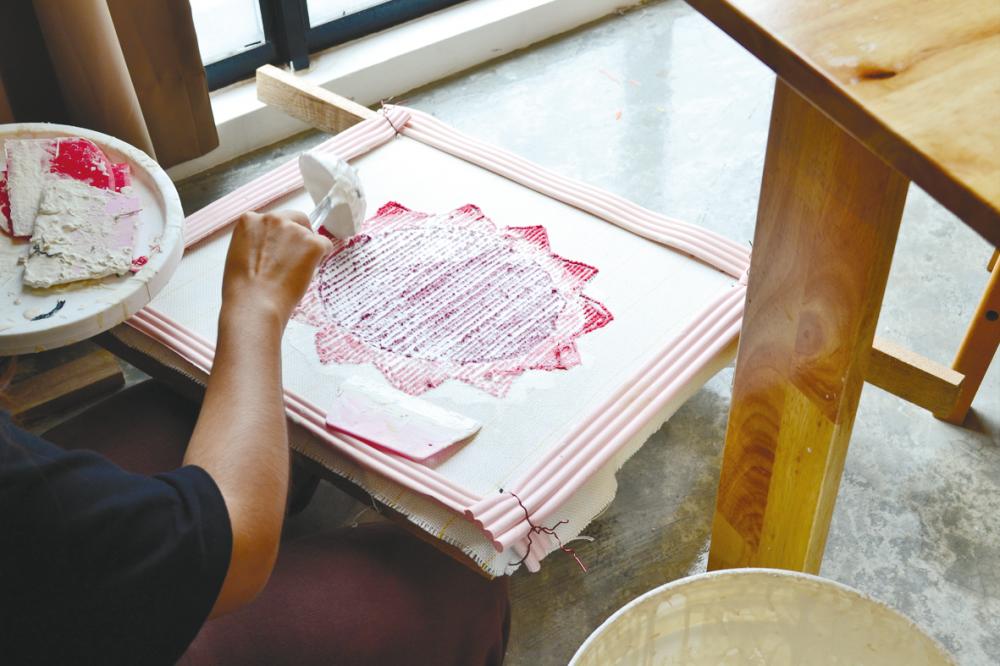
After that, Jean’s assistant unclamped our artwork from the table to glue the backs of the cloth. This ensured that the yarns don’t come off, and then they were clamped back onto the table to bedried with heat guns. Jean taught us to constantly move the heat guns so that they dried evenly and faster.
After the glue was completely dried, our rugs were trimmed. Jean and her assistant helped us with the final stages so that our artwork came out as neat as possible.
We then had to cut the cloth into the shape of our rugs, leaving a one-inch hem allowance to be folded in and glued. Lastly, a backing was cut into the shape of the rug and glued onto the back to hide the cloth as a final touch.
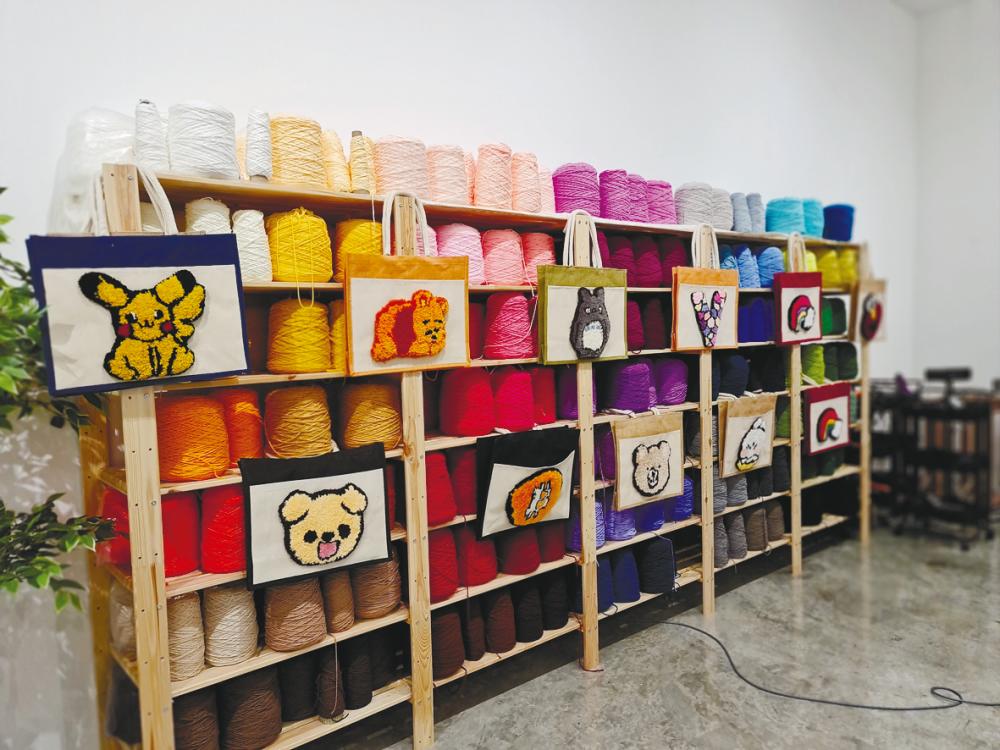
The whole process was really fun and relaxing for everyone, and is recommended for anyone who wants to take a day off to wind down. By going to a workshop to do tufting, you won’t need to invest in an expensive tufting gun or figure out the technical stuff like setting up the wooden frame.
Both engineers by degree, founder Jean was working in an eCommerce corporate job while Lim worked in the material handling business before Tuft Space. However, coming from a corporate background as a consultant, work-life balance was a struggle for Jean, who realised it was a neverending rat race.
Having to deal with the pressures of work including doing daily overtime, Jean decided to manage her stress with art, and that exploration led her to the world of tufting.
It started as a hobby, but soon Jean felt that it would be beneficial for others to experience the calm she had with crafting.
She said: “I thought ‘Shouldn’t this cool activity be shared with others who are going through tough days like me?’ It worked miraculously for me and it could be a great way to help others too.”
She decided to create a space where others could escape from the hustle of daily life.
“The absence of work-life balance definitely played a huge role in pushing me towards creating Tuft Space. I figured if I didn’t make any changes, nothing was going to change.”
Of course, making the switch wasn’t all sunshine and rainbows.
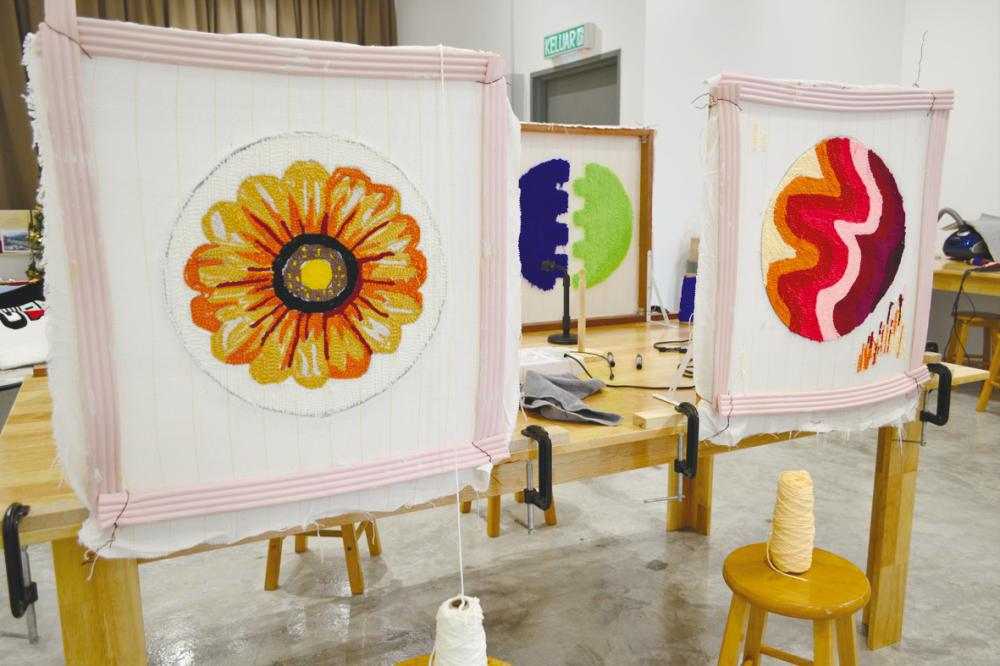
Jean advises: “The difference between not starting and starting is the hardest and biggest step; but here’s the thing, if you never try, you will never know where your potential is. I would definitely suggest to take baby steps, doing it as a side hobby whilst keeping your job first, and gradually transition if an upward potential is seen.”
Support from her parents and partner gave her the courage to take a leap of faith, and thus, Tuft Space was born.
Being the first tufting store in Shah Alam and one of the pioneers of tufting workshops in Malaysia, they believe that everyone is innately creative and it’s their hope that tufting might awaken that spirit in everyone, from the most confident artist, to the person who never thought they could make anything.
In a month, Jean estimates that they go through 100kg of yarn. With customers coming from all around Malaysia and even Singapore, Jean says that it’s interesting how she can understand someone through the art and colour choices they made.
As like-minded people came to make art, they loved the experienced Jean created.
“I want to thank all the heartfelt reviews and feedback I received from my customers as it motivates us to improve further so that we can provide the best tufting experience.”
Currently, Tuft Space is working on a few collaborations to create more tufted home decor, to take living essentials to another level.
Besides floor rugs, Tuft Space also also allows you to create other decorative pieces such as wall art deco, table mats, coasters, mirror covers, pillow covers, or cushion covers. For Jean, she wants to make sure that your hours spent in making craft is turned into a functional product for your home.
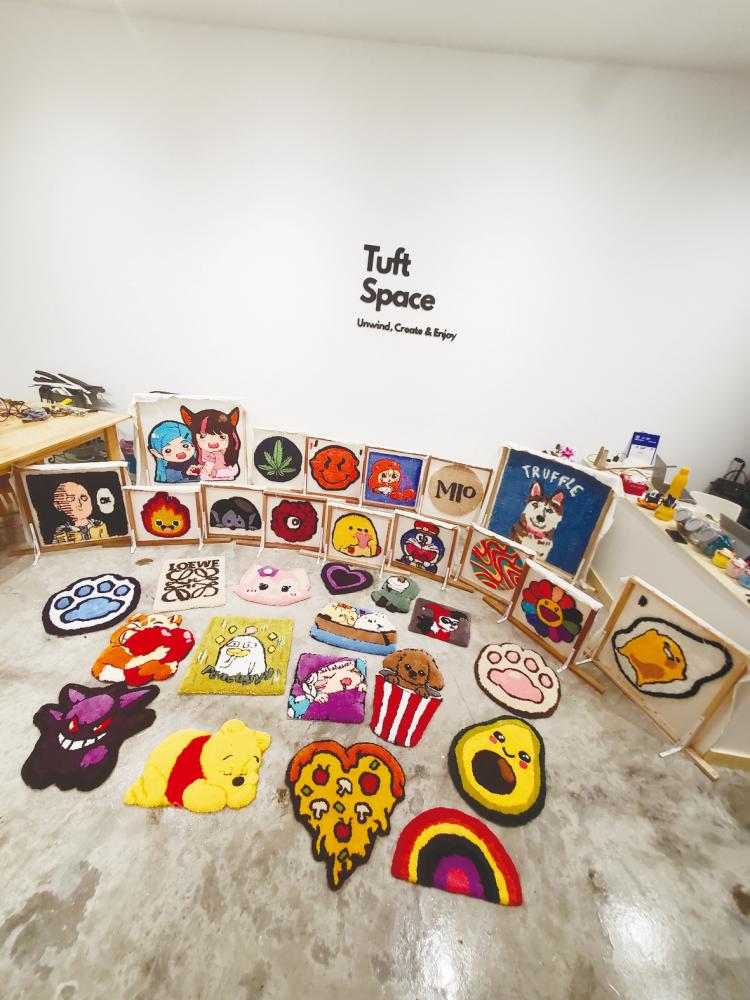
Find out more info on with their Facebook and Instagram @tuftspace.my, or their website tuftspace.my for more info. They are also having a Christmas limited-time promo where more is merrier, as friends can join for free.



